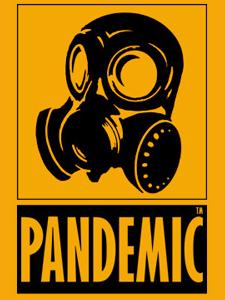Tag Archives: outbreak
PANDEMIC OUTBREAK – Mystery illness claims dozens of Cambodian children
 Hong Kong (CNN) — The World Health Organization is helping the Cambodian Ministry of Health investigate the cause of a mysterious illness that has killed dozens of children in the country since April.
Hong Kong (CNN) — The World Health Organization is helping the Cambodian Ministry of Health investigate the cause of a mysterious illness that has killed dozens of children in the country since April.
A joint statement from the WHO and the ministry, released Wednesday, said 61 of 62 children admitted to hospital had died from the disease. The majority of the reported cases came from southern and central Cambodia.
“[The Ministry of Health] and WHO are currently investigating the cases,” Mam Bunheng, the Cambodian minister of health, said in the statement, “possible causes of the disease are being considered, but definite identification of the cause and source may take some time.”
Initial reports from the Cambodian government indicate that the unknown illness struck children under seven years old.
“The symptoms include a mixture of respiratory illnesses, fever and generalized neurological symptoms, including convulsions in some of the patients,” Dr. Nima Asgari, a team leader of the WHO country office in Cambodia, said in an email to CNN.
The children were brought to hospitals in the capital, Phnom Penh, and the northern tourist hub of Siem Reap — the two biggest cities of Cambodia — but most of them died within 24 hours upon admission.
“This can be a mixture of a number of known diseases — virological, bacterial or toxicological — which have been reported as one syndrome or something new,” Asgari added.
“While the labs are excluding the various pathogens, we are providing support to [the Ministry of Health] to make sure that an in-depth analysis of cases is done to identify possible causes or exposures which will give us a better picture. The investigation is ongoing.”
So far, there were no signs of contagion or clusters of cases — patients who had contact with each other and fell sick together — a telltale warning sign of a highly infectious disease. But Asgari admitted the high mortality rate in such a short time was extremely worrying.
ZOMBIE OUTBREAK – Indianapolis David Martin fights off cops, stun gun shocks in ‘ninja’ attack
WATCH VIDEO BELOW
A naked man went on a rampage against police officers, doing ninja-like flips and ignoring stun gun shocks — and it was all caught on video.
David Martin, 27, was recorded running down the middle of a street, punching people during a violent frenzy in Indianapolis on May 20, Fox 59 reports .
According to nydailynews.com , police attempted to subdue Martin with a stun gun, tackling him to the ground.
Despite Martin’s shrieks and screaming, the shocks had no effect on his mobility, and he continued to fight the officers with kicks. He is seen doing somersaults while fighting off police.
“This guy’s like a ninja, man. Holy s–t!” the man filming the police encounter is heard saying in the video clip “That guy’s strong, he’s got to be on something,” the man adds.
FOX 59 reports that Martin allegedly injured a female officer when he pushed her into a building. He also punched a male cop in the face multiple times, according to the report.
Video of the event posted on YouTube describes Martin as a ‘zombie.’
Watch the video here : http://bit.ly/OhDuxp
ZOMBIE OUTBREAK CHINA – Face-Eater Attack in China
AN intoxicated bus driver has been detained after he gnawed on a female driver’s face  after blocking her car on a road in Wenzhou City of Zhejiang Province, local media reported yesterday.
after blocking her car on a road in Wenzhou City of Zhejiang Province, local media reported yesterday.
Police said the incident occurred near a bus station in Ouhai District at 2pm on Tuesday when a man surnamed Dong rushed onto the road and blocked the vehicle of a female driver surnamed Du, Wenzhou City News reported.
The man then climbed on the car’s hood and started hitting the windshield while Du screamed inside, police said.
Several minutes later, Du got out of the car to flee, but the man jumped on her and started gnawing on her face once they were on the ground, police said.
Passers-by said Du’s face was covered in blood. They said they tried to pull Dong off the woman, but he seemed so “crazy” that they couldn’t stop him.
Police stopped the man. Doctors at a nearby hospital said Du will need plastic surgery to repair the damage from the bites on her nose and lips.
Police said Dong had been drinking heavily with his friends at lunch that day.
ZOMBIE OUTBREAK – Are synthetic drugs creating zombies?
Zombies are no longer fictional characters that inhabit our movie screens. They have  become “real” in the eyes of some people thanks to the new synthetic drugs that are young people have discovered.
become “real” in the eyes of some people thanks to the new synthetic drugs that are young people have discovered.
HEADLINE from last week: “Man Eats Family Dog After Police Say He Ingested K-2.” This is not a “National Enquirer” headline. This came directly from the Waco, Texas, ABC TV affiliate.
Witnesses claim Michael Daniel assaulted people at his home, chased a neighbor, and began barking and growling. He then picked up the family dog, strangled it, and then began to eat it, hair, flesh and all. Family members claim Daniel was experiencing a bad trip after ingesting K-2.
This is only two weeks later after the infamous Miami incident, where a man, high on synthetic drugs, chewed off the face of a homeless man along a stretch of busy highway. Since then similar zombie/cannibal incidents have been reported in Manatee County, Florida, Maryland, Louisiana, and now Texas. The Maryland incident involved a man reported a man killing and then eating his roommate’s heart and brain. They all have been attributed to synthetic drugs.
Spice, K-2, potpourri, space, bath salts, etc. are forms of synthetic marijuana that until recently were legal and found in many stores. Essentially they are a mixture of dried herbs and spices mixed with chemicals. These drugs are undetectable by smell or drug testing and are quickly becoming the drug of choice amongst drug users.
Here in Clare County, the health department demanded that retailers take the synthetic drugs off their shelves. This is not the case, however, in other counties. One only has to make the short drive to Bay City where I’m told synthetics are sold at Earth Oddities, Kings and CB Discount.
I’m sure in short order, the sale of synthetics will be banned statewide. However, will that solve the problem? I don’t think so. Because they are readily available, cheap, and provide a quick high, drug users will continue to purchase the drugs illegally.
And that’s a problem. Along with the cannibalistic atrocities, several murders and violent crimes have been attributed to synthetic marijuana. If meth makes people hallucenogenic, synthetics drive some people to violent acts and craziness. It is, say many, the worst drug to come along in a long while.
It’s great that Clare County has prohibited the sale of synthetics. They acted quicker than a lot of counties in this regard. However, as many of us know, a lot of Clare County’s drug problem comes from downstate. Drug users continually run down to buy their drugs off of Detroit area streets to bring them back here to sell and use.
If one is to believe the zombie apocalypse is near- after all it is trending all over the internet, and we all know to believe everything we read on the internet, then we need to do everything we can to eliminate these drugs that make some people want to act like zombies.
More importantly, synthetic drugs, whether they are bath salts, K-2 or whatever, have no business being in the hands of irresponsible drug users. Let’s hope they get a clue, and get off the crap, asap.
GERM OUTBREAK AT CDC – Security lapses found at CDC bioterror lab in Atlanta
A federal bioterror laboratory already under investigation by Congress for safety issues has had repeated incidents of security doors left unlocked to an area where experiments occur with dangerous germs, according to internal agency e-mails obtained by USA TODAY. In one incident, an unauthorized employee was discovered inside a restricted area.
has had repeated incidents of security doors left unlocked to an area where experiments occur with dangerous germs, according to internal agency e-mails obtained by USA TODAY. In one incident, an unauthorized employee was discovered inside a restricted area.
A Centers for Disease Control and Prevention spokesman says the unsecured door incidents in 2010 and 2009 inside its Emerging Infectious Diseases Laboratory in Atlanta were “not an acceptable practice of the agency.” At no time, though, were bioterror organisms such as anthrax at risk of falling into the wrong hands, he said.
“The doors in question here are but one layer of multiple layers of security when it comes to both the animals and the agents that are worked on,” CDC spokesman Tom Skinner said. “The security measures we have in place, without going into detail, make it close to impossible for anyone who doesn’t have approved access to the agents to get their hands on them.”
The e-mails document doors being left unlocked in the building’s high-containment lab block, which includes an animal-holding area and Biosafety Level 3 labs where experiments are done on microbes that can cause serious or potentially fatal diseases and can be spread through the air. Anthrax, monkeypox, dangerous strains of influenza and the SARS virus are examples.
One e-mail by a CDC safety manager describes an unauthorized man discovered in the animal-holding area and multiple doors that were unsecured at the time. Skinner says the man was a CDC scientist but was not immediately able to provide further details about why he was in the restricted area. Skinner said the man was in an outer corridor of the BSL-3 suite of labs.
For safety and security, access to BSL-3 labs is restricted and they are supposed to have special airflow systems designed to help keep organisms inside. Problems with the airflow systems revealed by USA TODAY, including a February incident where air briefly blew out of a lab into a “clean” hallway, prompted the House Energy and Commerce Committee this week to launch a bipartisan investigation into safety issues. The committee is examining whether CDC — which inspects its own labs along with others nationwide that handle bioterror agents — is complying with federal safety requirements at the lab building, also known as CDC Building 18.
E-mails written by CDC Safety and Occupational Health manager Patrick Stockton indicate the lab has had security lapses that Rutgers University biosafety expert Richard Ebright said may be a “major violation” of security standards for labs that work with potential bioterror agents.
In a November 2009 e-mail, Stockton wrote to several CDC officials involved with Building 18’s high-containment laboratory area: “We are continuing to have some difficulties with doors remaining unsecured in the (high-containment lab) area. … If we continue to have issues, we will need to begin looking at individual access rights for these doors.” The particular issue involved expansion sections of the doors, used to accommodate large pieces of equipment. The “through-bolts are not being re-engaged, and the doors are remaining unsecured,” Stockton wrote.
Five months later, the expansion doors continued to be left unlatched and unsecured. According to an April 29, 2010, e-mail to more than a dozen CDC officials involved with the lab building, Stockton wrote that earlier that day “an individual with no access and no escort” was found in the research animal-holding area of the high-containment lab area.
The e-mail continued: “He did not have access and at this point we are not sure how he got there.” Stockton wrote that he talked to program and animal staff and “no one from their programs let this person in.” CDC’s Office of Security and Emergency Preparedness, which is a liaison to the Department of Homeland Security, was investigating, the e-mail said. Homeland Security officials did not respond to questions about the CDC security incidents.
Stockton’s e-mail says that after the incident he and the building’s high-containment lab manager, Anthony Sanchez, walked the entire high-containment block and found two doors unsecured. “This can certainly happen by mistake on occasion but we have addressed this issue in the past and now it seems to be a common failure point. … It is imperative that all doors leading to high containment remain secured,” Stockton wrote.
Stockton and Sanchez didn’t grant interviews. CDC spokesman Skinner said: “Doors being left open by staff is not a standard practice. It’s unacceptable, and our safety office has sent out numerous reminders to staff of the importance of staff practicing good physical security.”
Skinner said he is unaware of any other door security incidents after the one in April 2010. He emphasized that multiple layers of security in the building would have prevented any unauthorized person from accessing germs that hold the potential to be used as bioterror weapons. “The bottom line is, worker safety and the public safety were never compromised,” he said.
Ebright, of Rutgers University, expressed concern about the repeated issues revealed in news reports about Building 18 since the $214 million building opened in 2005, including articles in 2007 about backup generators that failed to keep airflow systems working during a power outage, and in 2008 about a high-containment lab door that the CDC sealed with duct tape after an incident where an airflow system malfunctioned and sent potentially contaminated air into a “clean” corridor.
The “documents you have obtained over the past several years make it clear that there has been a pattern of corner-cutting and negligence at CDC biocontainment facilities —starting with the failure to include provisions for emergency backup power, and encompassing inadequate door seals, improper airflow, jury-rigged repairs, and unsecured access points,” Ebright said.
If the security issues described in Stockton’s 2010 e-mail continue and bioterror agents are being used in that area, Ebright said, “then heads should fall.”
The CDC currently is responsible for inspecting the safety and security of its labs that work with bioterror agents. Skinner said CDC has a 66-year record of operating its labs safely.
The CDC said this week, in the wake of USA TODAY’s reports, that it is considering having its labs’ safety reviewed by an outside agency, such as the U.S. Army Medical Research Institute for Infectious Diseases (USAMRIID).
Biosafety and biosecurity concerns have been the subject of previous congressional concerns. A 2009 report by the U.S. Government Accountability Office, the investigative arm of Congress, examined the potential risks posed by the growing number of high-containment labs doing research on potential bioterror agents. It found that while lab accidents are rare, they do occur, primarily because of human error and systems failures.
It also noted that insiders working in the labs can pose risks, pointing to the Federal Bureau of Investigation‘s allegation that Bruce Ivins, a scientist at USAMRIID in Fort Detrick, Md., was the “sole culprit” in the 2001 anthrax attacks. While he was under investigation in 2008, Ivins died of a drug overdose.
“There are arguably two aspects to insider risk: the motive of the insider and the ability to misuse material and laboratory facilities,” the GAO wrote in its report.